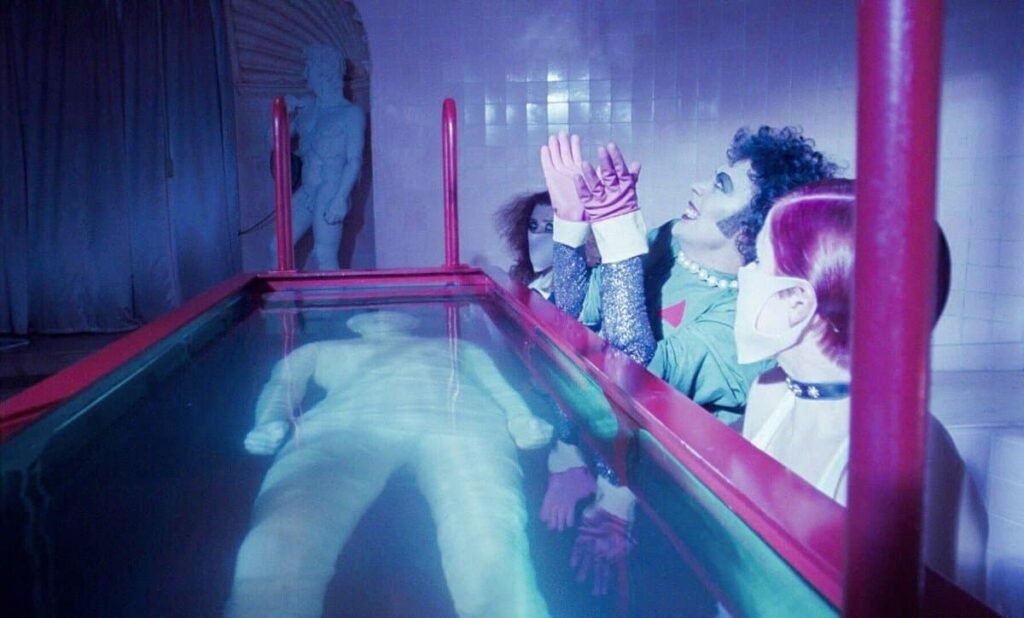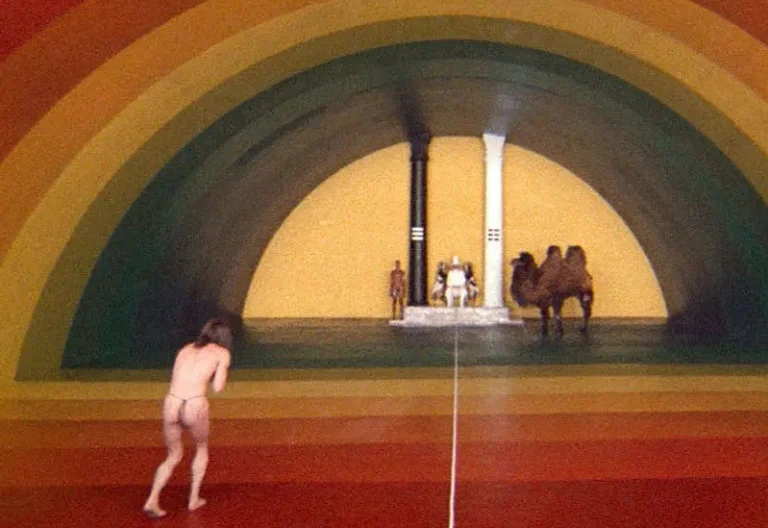what is a cult film?
A cult film is a movie that builds a devoted following without achieving mainstream success or widespread critical praise at the time of its release. These films are characterized by their unique, unconventional, or controversial content, which resonates with a particular subculture or niche audience. Unlike blockbuster, cult films thrive on their distinctiveness, attracting viewers who appreciate their offbeat qualities, subversive themes, or idiosyncratic style.
Published by: CinemaWaves Team | Filed Under: Film Blog
The Development of Cult Cinema
The concept of the cult film began to take shape in the mid-20th century, coinciding with the rise of independent and underground cinema. During this period, certain films that failed to achieve commercial success found a “second life” through midnight screenings, drive-ins, and later, home video. The 1960s and 1970s were particularly formative years for cult cinema, as the countercultural movement embraced films that challenged societal norms and defied conventions.
One of the earliest examples of a cult film is “Reefer Madness” (1936), a low-budget exploitation film intended as an anti-marijuana propaganda piece. Although it was initially dismissed as a poorly made melodrama, it gained a following in the 1970s when it was rediscovered and enjoyed ironically by college students who mocked its over-the-top depiction of drug use. Similarly, Ed Wood’s “Plan 9 from Outer Space” (1959), often cited as one of the worst films ever made, became a cult classic due to its campy, so-bad-it’s-good appeal.
The 1970s, also, saw the emergence of more sophisticated cult films. Films like Alejandro Jodorowsky’s “El Topo” (1970) and John Waters’ “Pink Flamingos” (1972) were embraced by the midnight movie circuit, where audiences seeking alternative, transgressive cinema could gather. These films challenged traditional notions of what a movie could be, blurring the lines between art and exploitation, and they attracted devoted followers who appreciated their boldness and originality.

The Evolution of Cult Films
As the concept of cult cinema evolved, so too did the ways in which these films were consumed and appreciated. The advent of home video in the 1980s played a significant role in the growth of cult film culture. Owning and repeatedly viewing films allowed fans to explore the subtleties of their favorite cult classics, share them, and engage with a growing and enthusiastic fan community. Video rental stores also became a haven for discovering obscure and offbeat films that had been overlooked by mainstream audiences.
During this time, certain films that had initially been box office failures found new life on video. For example, Ridley Scott’s “Blade Runner” (1982) was a commercial disappointment upon its release, but its complex narrative, striking visuals, and philosophical themes resonated with viewers over time, earning it a place as a cult classic. Similarly, “The Rocky Horror Picture Show” (1975) became a cultural phenomenon not through its theatrical run, but through midnight screenings where fans would dress up as characters, shout lines at the screen, and engage in elaborate audience participation rituals. This communal aspect of cult film viewership, where fans could share their love of a film in a collective setting, became a hallmark of cult cinema.
The rise of the internet in the late 20th and early 21st centuries further expanded the reach of cult films. Online forums, social media, and fan websites allowed film enthusiasts to connect across geographical boundaries. Digital distribution also made it easier for cult films to find an audience, with streaming platforms offering a wide range of niche content that might never have been available in traditional theaters or on physical media.

Characteristics of Cult Films
Unconventional narratives: These films frequently eschew traditional storytelling structures in favor of non-linear, fragmented, or surreal narratives. This can make them challenging for mainstream audiences but rewarding for those who appreciate their complexity.
Distinctive visual style: Whether through low-budget aesthetics, experimental cinematography, or striking production design, cult films usually have a unique visual identity that sets them apart from more polished, mainstream productions.
Memorable characters and dialogue: Cult films often feature eccentric, larger-than-life characters and quotable dialogue. These elements contribute to the film’s lasting appeal, as fans continue to reference and celebrate them long after the film’s release.
Camp and irony: Many films are embraced for their campy or kitschy qualities, enjoyed in an ironic or tongue-in-cheek manner. The appeal lies not in the film’s technical mastery, but in its ability to entertain and provoke a reaction, whether intentional or not.
Subversive themes: Exploring themes that are considered taboo or controversial. This willingness to push boundaries and challenge is a key factor in their appeal to certain audiences.
The Cultural Impact of Cult Films
Cult films hold a special place in the world of cinema, often reflecting the cultural and social trends of their time. Through their subversive content and devoted fanbases, they influenced mainstream cinema as well. Films like “Pulp Fiction” (1994) and “Fight Club” (1999), while achieving mainstream success, retain a cult-like following due to their distinctive style and cultural commentary.
This enduring connection between viewers goes beyond just watching the films, extending into fan art, cosplay, or online discussions. By inspiring such creative engagement, cult films cement their status as cultural phenomena.
Refer to the main page for more educational insights on filmmaking and cinema history.
Experimental film, referred to as avantgarde cinema, is a genre that defies traditional storytelling and filmmaking techniques. It explores the boundaries of the medium, prioritizing…
The studio system was a dominant force in Hollywood from the 1920s to the 1950s. It was characterized by a few major studios controlling all aspects of film production…
The scandal of the 1973 Cannes Festival, director Jodorowsky’s flood of sacrilegious imagery and existential symbolism in The Holy Mountain is a spiritual quest for…
American eccentric cinema is a distinctive style of filmmaking that surfaced in the late 20th and early 21st centuries, characterized by its quirky characters, whimsical…
In the late 1960s and throughout the 1970s, until mid 1980s, a cinematic revolution unfolded in Hollywood that would forever change the landscape of the film industry. American New…
Independent film, often called indie film, is produced outside the major studio system. Its roots can be traced back to the early 20th century, when filmmakers began seeking…






